Massage therapy
Massage is a very ancient form of alternative medicine that has lots of health benefits.

In today’s modern world that is advanced, connecting and networking with colleagues in the holistic healthcare sector can be very paramount. Whether you are a massage therapist or tend to favor ways of healing through nature, practicing massage along with other practitioners with similar interests may be skill-enhancing and supportive. This blog will discuss the ways how you can share your concerns about wellness and healing with other like-minded individuals and why it is important.
How can I connect with other massage therapists?
To connect with other massage therapists, consider joining professional associations, attending workshops, and engaging in online forums.
Creating connections with other therapists encourages teamwork, knowledge exchange, and growth. For instance, a community Western Integrative network offers an environment where members can talk about subjects like energy healing therapy, herbal medicine, or other alternative health practices. The AMTA (American Massage Therapy Association) and its affiliated associations offer therapists access to documented knowledge and resources in an organized manner via existing networks. The same applies to the case where the general feeling among practitioners is that there are modes of caregiving that are integrative and may be discussed through online sites, forums, Facebook etc.
These communities serve the purpose of acquiring new knowledge and techniques, it also aid in fostering a performance and growth-promoting environment.
What benefits can I gain from joining a massage therapy community?

Joining a massage therapy community offers opportunities for networking, skill development, and staying updated on industry trends.
When you become a member of such a community, you get introduced to providers of holistic health care who would give you the ways how to get the most from new holistic therapy and mind-body practices. In such networks, you can find ways to learn about the new integrative health approaches, and natural products for health, as well as discover pain relief tools and methods.
This kind of participation helps you to keep abreast of the ever-changing world of allopathic and alternative medicine. This also gives an opportunity to help one another in tough times, enabling their members to lead a course of action that does not only help their personal lives but does also help to advance their career goals.
In a collaborative environment, members can engage in discussions regarding the development of new products, which enhances the level of creativity and efficiency in your practice.
Where can I find massage therapy groups near me?
You can find massage therapy groups near you by searching for holistic therapy near me or attending local events and wellness centers.
Many natural healing centers and integrative wellness treatment facilities offer workshops and gatherings with the aim that practitioners can meet and exchange experiences. In addition, wellness expos as well as other community activities promoting complementary medicine offer one great chance of meeting new people. Personal meetings facilitate meeting local healers and discussing current issues like herbalism and holistic medicine or mindfulness and holistic wellness.
Through constant participation in these programs, one will develop amazing connections that will improve their career as well as be in line with the advancement of new knowledge in holistic health care.
How do online platforms help massage therapists connect?
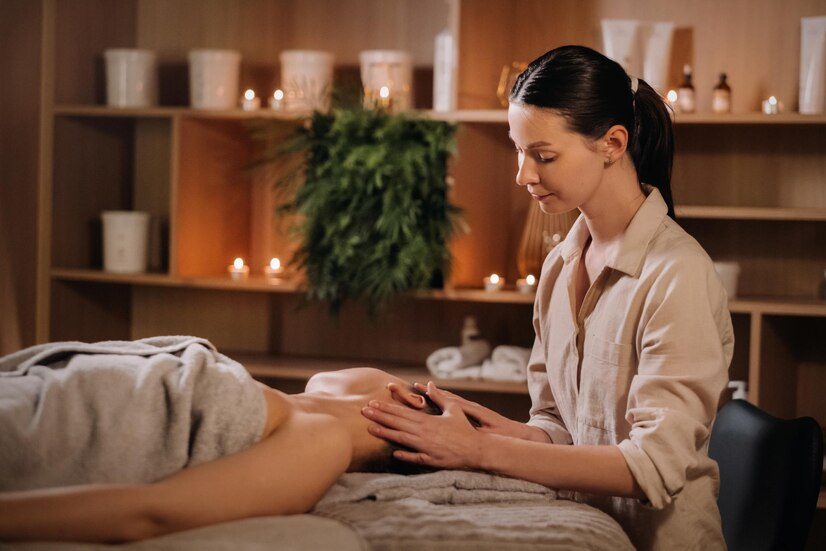
Online platforms enable massage therapists to connect globally, share experiences, and collaborate.
With the modern technology of the Internet, it has become easier to locate holistic health professionals from anywhere in the world using websites such as LinkedIn, Facebook groups, and forums dedicated to the subject. Forums are such spaces for therapists where therapeutic modalities like natural healing therapies, energy healing therapy, and integrative health practices can be discussed. These forums are good sources for both learners and those already practicing medicine since they provide people with a chance to pose questions, give information relevant to the forum and offer encouragement.
Therapists who are used to being physically active are given the ability to remain active mentally and remain in touch with their colleagues wherever they are.
What role do conferences and workshops play in connecting massage therapists?
Conferences and workshops serve as key networking opportunities, offering hands-on learning and collaboration.
Going to wellness seminars or attending massage therapy retreats gives you the opportunity to learn more about this new age treatments and whole body care practices. In addition, such events frequently host speakers considered the best in complementary medicine, mind and body wellness and holistic pain treatment. On top of that, these gatherings offer perfect opportunity for networking where therapists can interface and establish useful and dependable working relationships.
Involvement in such activities not only develops your capacities and abilities but helps in developing a communal feeling and understanding within the larger group of wellness and healing activities.
How can mentoring relationships benefit massage therapists?
Mentorship helps massage therapists develop advanced skills, gain industry insights, and navigate challenges.
For establishing relations in the field of massage therapy, mentorship plays a key role. Expert professionals may provide advice in holistic pain strategies, natural health, herbal medicine and many other areas. Where you are protected by an elder who has more experience than you, your practice will increase as such an expert will provide not only the skills but the confidence over time.
A healthy relationship between the mentor and the mentee nurtures development and positively impacts the application of health care practices within a holistic health facility.
How do shared resources in massage therapy communities enhance practice?
Communities offer access to shared resources such as case studies, research, and training, enhancing your practice.
There is a great benefit in being within a holistic health care community, due to the useful resources offered in terms of shared materials such as research papers, training videos and massive collections of case studies. Such materials help to keep the practitioner updated on the current knowledge of therapies, bodymind working because of wholeness and how to bring together most forms of wellness treatment. Exposure to such materials enriches your understanding in that area, enhancing your skill and hence the quality of care you offer to your clients.
These experiences are very useful in the day to day activities of the holistic practitioner especially in ensuring that he or she provides the best possible care to his or her clients.
Conclusion: Embrace the Power of Community
Engaging with other professionals in the area of massage therapy is not just a matter of establishing contacts, but rather a question of developing a community that is interwoven and helps each individual grow. By joining groups or attending workshops or simply participating on online websites, one can improve their knowledge of natural medicine and holistic health care and also develop good friendships that are helpful and encouraging. As you establish these connections, you will enjoy the dividends of working together; learning from each other and helping each other out so that you also grow as a person and in your practice, whilst furthering the cause of health and wellness.
Massage therapy
Massage is a very ancient form of alternative medicine that has lots of health benefits.

The function of a massage therapist extends well beyond relaxation and includes something more closely related to health and wellness. If you are interested in natural healing and therapies as well as aspects of mind-body wellness, then practicing as a practitioner is rewarding and impactful. Should you decide to embrace this vocation, I suppose you would have a lot of inquiries regarding what approaches to take in regard to this profession. There are several typical concerns that we would look at for those willing to try their hand at becoming a massage therapist.
What qualifications do I need to become a massage therapist?
You need certification or a license to become a massage therapist, which varies by location. Courses usually cover anatomy, physiology, and massage techniques.
In order to practice as a holistic health care professional with expertise in massage therapy one has to follow an accredited course. In these programs, you will learn information that ranges from basic anatomy to advanced alternative methods of healing as they emphasize multi-faceted healing. After finishing school, it is common to take a state or national exam, such as MBLEx. In addition, there are those therapists who would want to go back and learn herbal medicine or energy healing therapy and other techniques directed at complementary medicine which are additional services to their clients.

How long does it take to become a certified massage therapist?
It typically takes between 6 months and 2 years to become a certified massage therapist, depending on the type of program you choose.
The period of training will depend on whether you are taking a part-time course or a full-time one. Most programs offer in-depth training, particularly in the area of holistic therapy, where you are expected to master several techniques. There will be no shortage of modules when you train at a natural healing center or a holistic school in as far as mind, body and spirit balance is concerned since this is critical in understanding sociocultural and individual factors.
What skills are important for a successful massage therapist?

Key skills for a massage therapist include strong communication, empathy, and a solid understanding of anatomy and massage techniques.
Therapeutic practice in the area of integrated wellness treatments is inherently an amalgam of technical and psychological skills. It is important to relate to clients so that they can explain their requirements and the therapist can tailor treatments. Understanding the human body and having the compassion that most therapists possess gives way to harmonizing the treatment with the principles of healthcare. Gaining practical clinical work experience in other alternative healing methods enhances career growth.
How can I specialize in holistic massage therapy?
Massage therapists can specialize in holistic care by learning additional techniques such as energy healing therapy or herbal medicine.
Usually, for effective holistic lifestyle management, the individuals must have additional training in such concepts as mindfulness and holistic health or advanced practices of complementary and alternative medicine. Such areas of practice give therapists the room to provide more wholesome care that factors in the patient’s well-being and not just the physical aspects. You may also make use of other practices such as health promotion medications to give patients several treatment options based on health.
Where can I find the best massage therapy programs?
Look for accredited programs at natural healing centers, vocational schools, or holistic health institutes with a strong reputation.
This means that when looking for a program, it would be best to select one that supports your desire in natural healing therapies and integrated health practices. Most searches targeting holistic therapy Chicago, for instance, are likely to highlight well-rated programs that integrate practical learning with theoretical teaching. – For natural medicine programs, choose a school that provides clinical training in various modalities including energy healing and herbal medicine in holistic care to create a consistent development.
What are the benefits of becoming a holistic massage therapist?
Holistic massage therapists enjoy flexible schedules, high job satisfaction, and the ability to help clients improve their overall health.
It is important to note that becoming a holistic health practitioner has many benefits both personally and professionally. Natural healing centers or an individual’s own clinic and world are in future in great prospects. Looking for holistic finally results in pragmatic need for one in this field. Many patients seek for pain relief and recovery which requires a holistic approach and these are the services that you will be providing which makes you in high demand.
How do I start my career as a massage therapist?
Begin by enrolling in an accredited program, earning certification, and gaining practical experience through internships or employment.
It is important to gain knowledge and adequate education in a motivating reason when one wants to plunge into a career in holistic health care. With all the relevant course work that you have done and relevant certification that you have acquired, you may be wanting to go in to some of the existing natural healing centers to gain experience. You will benefit from the competition in that field by having a marketing strategy of building professional relationship to acquire clients which will be complimented by providing unique integrative wellness services and further enhancement of your knowledge and skills in mind-body practices.
Conclusion
A career in massage therapy with holistic health care practice is rewarding as well as fulfilling. By combining natural and unconventional healing practices, you are able to provide clients with an integrated mode of wellness and treatment. Be it in energy healing therapy, herbal medicine, or holistic therapy, there are numerous avenues in this profession that are dynamic and satisfying. Armed with appropriate education, passion, and commitment, you will succeed as a practitioner and help a lot of people in a very valuable way.
Massage therapy
Massage is a very ancient form of alternative medicine that has lots of health benefits.
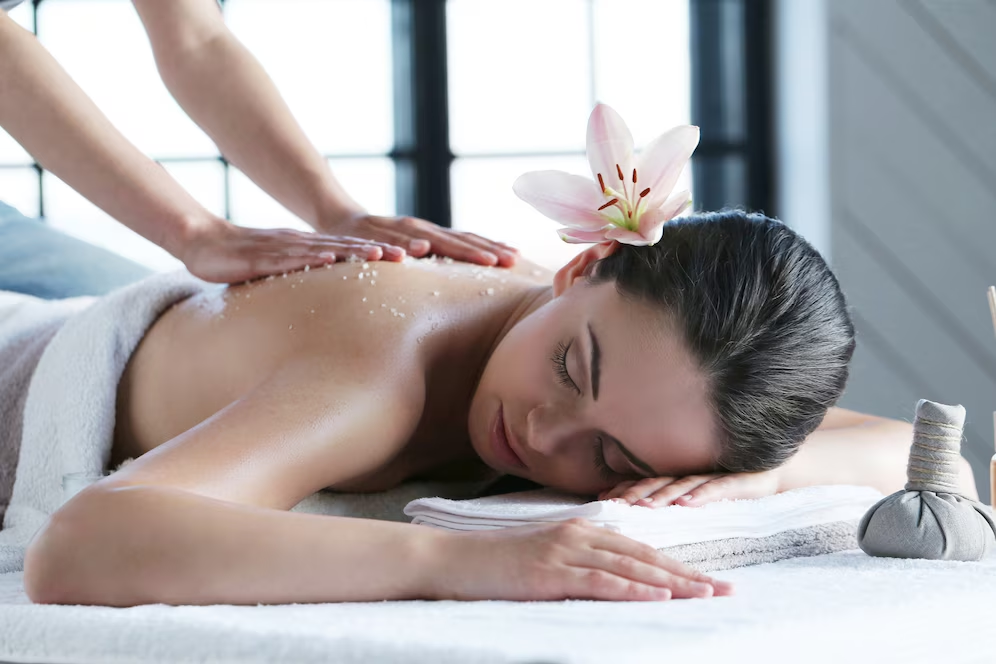
Massage therapy is one such ancient practice designed to promote one’s physical as well as mental wellness. Basically, it involves a range of techniques that may help ease muscle tension, reduce stress, and make people feel more relaxed. In this blog, we close up on some of the most simple concepts and techniques that make massage therapy an effective form of healing practice. Using this blog, we answer the most common questions people have about this healing practice.
What are the essential techniques in massage therapy?
The essential techniques in massage therapy, includes Swedish massage, deep tissue massage, and trigger point therapy. Each technique focuses on different pressure levels and muscle areas to achieve specific outcomes like relaxation, pain relief, or injury recovery.
The most common is Swedish massage which performs strokes and circular movements with kneading to relax the body. Deep tissue massage works deep inside muscle tissue, with firm pressure. They are applicable in cases of chronic muscle pain. They apply pressure to certain areas in the body to handle tensed muscles, known as trigger point therapy. The techniques can be used in combination to achieve specific therapeutic ends.
How does massage therapy help with muscle tension?
Massage therapy helps relieve muscle tension by increasing blood flow and reducing the buildup of lactic acid in muscles. The gentle manipulation of muscles also relaxes the nervous system, contributing to an overall sense of relaxation and relief from tightness.
By applying pressure and movement to tight muscles, blood flow increases, and there are more oxygen and nutrients travelling to the areas of muscle tissues, thus making healing faster. It thus decreases inflammation and makes tight muscles relax.
Massage also stimulates the lymphatic system in helping eliminate waste products such as lactic acid. Muscle tension is caused by the accumulated lactic acid that should be flushed out. When the nervous system calms, the body relaxes, and tightness on muscle areas is released naturally.
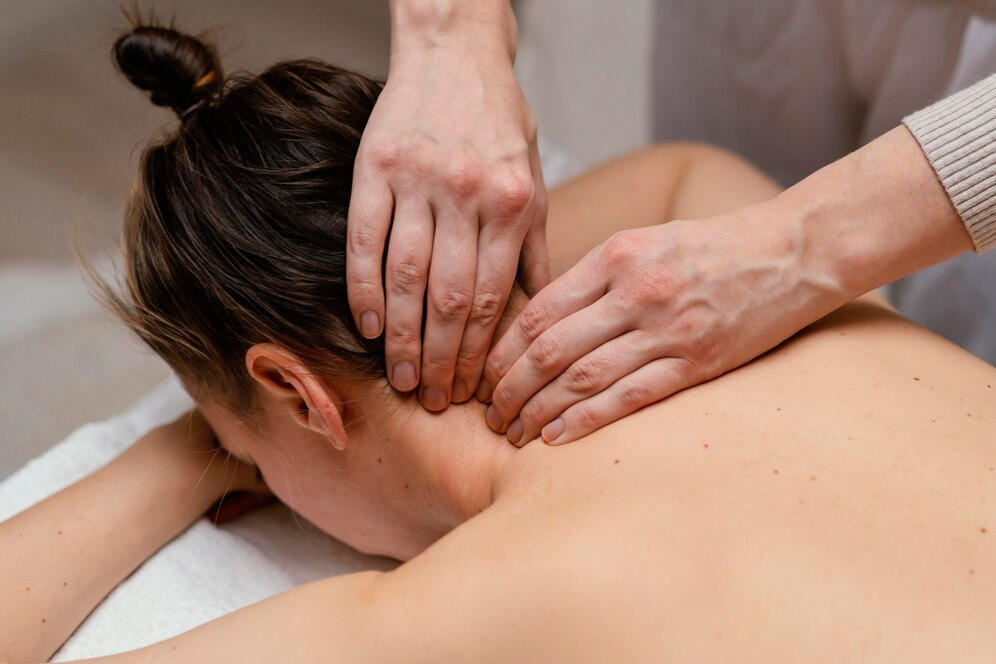
What are the benefits of regular massage therapy?
Regular massage therapy offers numerous benefits, including reduced stress, improved flexibility, and enhanced blood circulation. It can also help with chronic pain management, boost the immune system, and improve sleep quality for overall well-being.
Massage therapy sessions, if conducted regularly, contribute to decreasing the muscle soreness but also assistance in emotional wellbeing through reduction in the levels of the stress hormone, such as cortisol. A relaxed muscle can stretch and improves flexibility and motion in joint. Blood circulation is enhanced, bringing necessary nutrients to tissues and organs. This way, through routine massages, patients with chronic conditions, such as arthritis or fibromyalgia, will reduce pain, help their ability to function in daily activities and even sleep better, which promotes a healthier lifestyle.
What should I expect during a typical massage therapy session?
During a typical massage therapy session, expect to fill out a health questionnaire, discuss any problem areas, and receive a personalized treatment plan. The session may involve various techniques based on your needs, lasting anywhere from 30 to 90 minutes.
The therapist would start asking questions regarding one’s health history and specific regions of discomfort or pain. Depending on that, techniques are selected as appropriate, whether it would be Swedish massage for relaxation or deep tissue massage to relieve tension. You will typically be asked to undress to a comfort level, and the massage therapist will drape over you with a sheet. The technique will be pressure-focused on specific muscle groups, sometimes to help ease pain, sometimes to simply relax. After, the massage therapist might provide recommendations for hydration or schedule follow-up sessions.
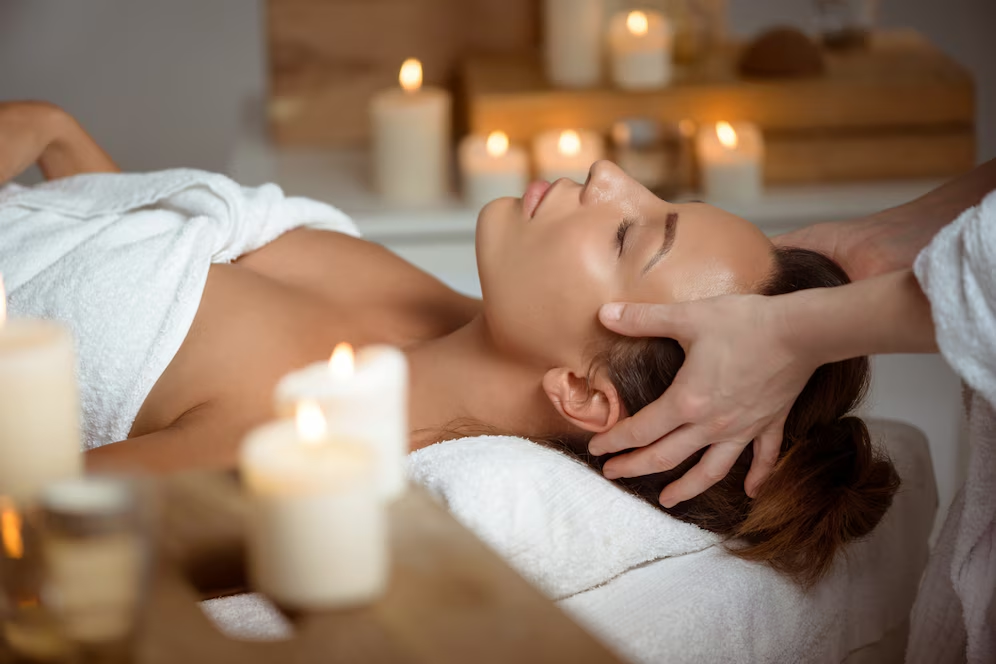
Is massage therapy safe for everyone?
Massage therapy is generally safe for most people, but those with certain medical conditions like severe heart problems or infections should consult a doctor first. Always inform your therapist about any health concerns before starting the session.
Even though massage has many benefits, some individuals have conditions that may expose them to risk, and therefore they need more care during the therapy. For instance, people with severe heart diseases or suffering from infections on the skin or with surgical history should not be entertained for massage therapy unless a physician has cleared them to receive it.
Pregnant women will also require therapy practitioners who specialize in prenatal massage as not all techniques applied to the body are safe for the unborn baby. Old patients and weak boned ones may also need more milder treatments. Letting your therapist know about any health conditions ensures that they will adjust the techniques in a safe manner to suit your needs.
Conclusion
Knowing the key concepts and techniques of massage therapy will make it easier to make informed decisions about its potential integration into your wellness program. Whether it is for relaxation, pain relief, or to enhance flexibility, massage therapy offers substantial benefits toward an individual’s needs. Ensure that you seek a professional who is well-trained; that way, your session will be safe and effectively tailored toward your health conditions.
Massage therapy
Massage is a very ancient form of alternative medicine that has lots of health benefits.

Massage therapy has a historical base that cuts across and encompasses different civilizations and cultures. This may not be surprising since it has also become a practice that enhances good health by promoting all-around health care. In this guide, we will trace the background of the massage therapy practice and its later progression in various times and cultures.
What are the origins of massage therapy?
The origins of massage therapy date back over 5,000 years, with early records found in ancient China, India, and Egypt. It was used as part of whole-person care for physical and mental wellness and healing.
There are several ancient civilizations where inflammatory therapy originated. The ancient Chinese, medicine adopted massage in the procedure of balancing vitality or “Qi”. In Ayurveda massage was used to remove the instability of the body and mind.
Wall carvings in Egypt show massage as one of the treatment procedures and physicians in Greece like Hippocratic Claude recommended massage therapy for various joints and muscle bones. These types of civilizations understood massage or touch as a method of treatment and promotion of better health.
Initially, massage therapy focused on the whole body and mind and not a detail part. Later, a good amount of attention was received to these techniques of treatment, and local parlance of therapeutic measures spread to the whole world.
How did massage therapy evolve through ancient civilizations?
Massage therapy evolved through ancient civilizations by integrating into health practices in Egypt, Greece, and Rome. It supported whole-person care, helping to maintain a holistic lifestyle focused on wellness.
However in ancient Egypt, massage was included in the spiritual and meditative procedures, men practicing a form of it in Greece were athletes whose muscles required revitalizing. The Romans made advances in the art of massage and incorporated it into baths and health regimens for relaxation and rejuvenation purposes.
Physicians in ancient Rome employed massage as a therapeutic technique for injury rehabilitation as well as wellness promotion. With this evolution of practices came the understanding that these techniques were an integral part of one’s treatment, no longer limited to the physical aspect of health. These early traditions ushered in modern-day massage therapy that actively implements a healing practice alongside a healthy mind.
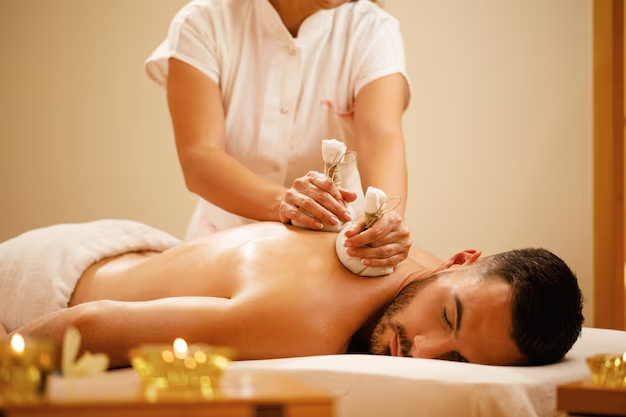
What role did massage play in traditional Chinese medicine?
Massage therapy in traditional Chinese medicine focuses on balancing the body’s energy, or “Qi.” It was part of whole-person care, addressing both physical ailments and mental well-being.
In TCM, massage techniques, such as Tui Na, were used to stimulate the flow of Qi (life energy) throughout the body. Practitioners thought that an imbalance of Qi could trigger illness and thus massage helped to rebalance, relieve pain, and improve circulation.
Massage is the holistic system of care through the energy balance in the body together with overall emotional and mental well-being. Massage therapy, along with acupuncture and herbal remedies, contributed to maintaining a holistic lifestyle and general well-being and healing.
How did massage therapy influence ancient Greek medicine?
Massage therapy was vital in ancient Greek medicine, particularly for athletes. It was considered essential for wellness and healing, promoting a holistic lifestyle.
Massage therapy played a great role in the life of athletes in ancient Greek society. It was used for the prevention of injuries as well as muscle recovery and helping to cure pain. Great physicians such as Hippocrates used massage therapy in their treatments considering its effects not only on the body but as well on the brain.
Massage was not only applied to the physical body but also encompassed mental clarity and balance, therefore satisfying the Greek’s need for integrated health care. The subsequent European concepts of wellness and healing styles traced their origins back to these practices as well as the inclusion of massage into the health care system.
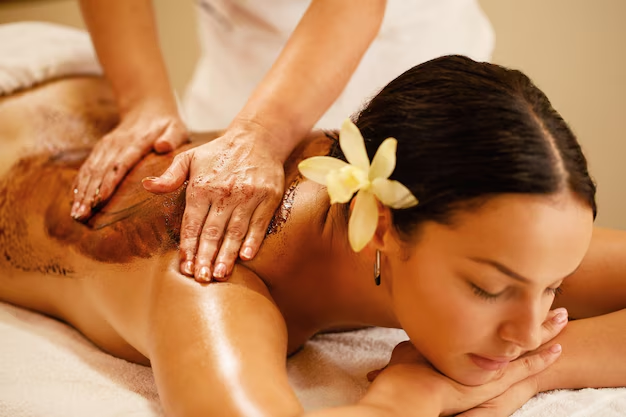
What was the significance of massage in Ayurvedic practices?
Massage therapy in Ayurveda was a key practice for balancing body energies and promoting a holistic lifestyle. It emphasized wellness and healing through mind-body harmony.
In Ayurveda abhyanga massage is a key component of the ancient Indian medicine, Ayurveda as it plays a role in the stabilization of the body’s doshas. It was thought to eliminate waste products, promote blood flow, and make the mind clearer.
For Ayurvedic practitioners, massage was part of a holistic lifestyle and sometimes combined with yoga and herbal medicine to promote healing in the body. Its goal was to bring harmony between the mind, body, and spirit or holistic wellness and healing. The use of touch and oil therapy is an important part of Ayurveda as it stands today.
How did massage therapy spread to the Western world?
Massage therapy spread to the Western world through the influence of ancient Greek and Roman practices. It evolved into modern methods that emphasize mindfulness and holistic health.
Massage therapy declined once again in Europe following the fall of the Roman Empire. During the Renaissance, physicians rediscovered its place within Western medicine through the rediscovery of the teachings offered by ancient Greek and Roman texts.
This brought in techniques that would further enhance wellness and healing; eventually, the natural development led to the birth of Western massage therapies, including Swedish massage.
Still, the physical comfort was now partnered with mindfulness and healthy habits for the holistic health disciplines. To this end, in today’s time, massage therapy is well accepted within Western health practice on both physical and emotional quality value.
In Conclusion
After all, its historical roots demonstrate the longevity for which massage therapy is valued in wellness and healing. From ancient civilizations to contemporary practice, massage has evolved in the involvement of whole-person care into an important part of a lifestyle deemed holistic in nature. Understanding its rich history can deeply inspire appreciation for its presence in mindfulness and holistic health in general.
Massage therapy
Massage is a very ancient form of alternative medicine that has lots of health benefits.
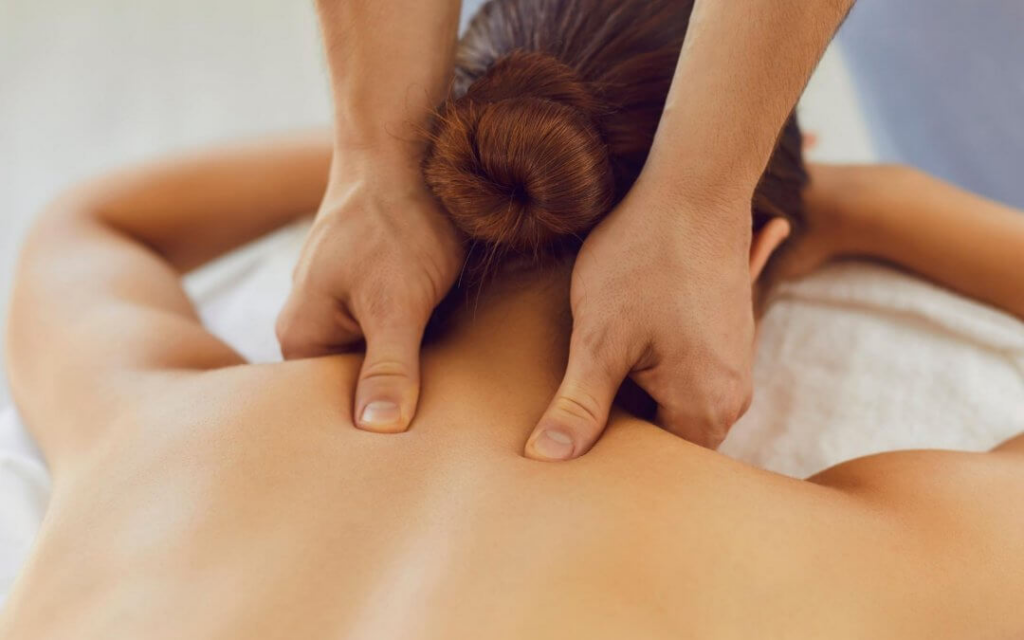
Massage therapy is not a new thing; it has been with us for quite some time and it is believed to be good for the entire body and mind. It involves touching soft tissues like muscles and tendons to relieve pain, promote relaxation or general wellness. The great variety of types of massages means that everyone can find one that suits them. This manual identifies the five major types of massage and describes common choices made in this type of treatment.
What are the benefits of Swedish massage?
Swedish massage reduces muscle tension, improves blood circulation, and promotes relaxation. It involves long, gliding strokes, kneading, and circular movements, which can also enhance flexibility. This type of massage is ideal for stress relief and overall well-being, making it a popular choice for many.
Swedish massage, aside from inducing relaxation, has been found to boost immune functioning, rid the muscles of toxins, and alleviate headaches. It manipulates the superficial tissue of muscles so that persons experiencing injuries do recover faster. With the regularity of Swedish massage comes improved flexibility in the joints and even sound sleeping patterns. Thus, it is appropriate for those starting out with massage therapy or those looking to reduce stress.
How does deep tissue massage differ from other types?
Deep tissue massage targets deeper muscle layers and connective tissues to relieve chronic tension and pain. It uses slower, more forceful strokes compared to other massages. This technique is beneficial for treating musculoskeletal issues, promoting recovery, and improving mobility for those with specific muscle-related conditions.
Unlike Swedish massage, which is more relaxation-oriented, deep tissue massage focuses on the amelioration of severe tension and the enhancement of structural alignment. In particular, it’s helpful for those involved in heavy physical activity, such as athletes, or those who suffer from chronic conditions like fibromyalgia or sciatica. It will also help break up scar tissue and reduce pain caused by inflammation.
What is the purpose of a hot stone massage?
Hot stone massage uses smooth, heated stones placed on the body to relax muscles and improve circulation. The heat from the stones helps relieve tension and stress, allowing the therapist to apply deeper pressure without discomfort. It enhances relaxation and promotes a sense of well-being.
Such a massage is ideal for anyone who loves light massage and has problems with any form of muscle tension. Moreover, with the high temperature, stones work on dilating blood vessels, promoting blood flow. It works great for stress reduction and reducing anxiety, resulting in improved sleep quality, and can also ease symptoms related to autoimmune diseases such as multiple sclerosis. The clients will leave rejuvenated and deeply relaxed.
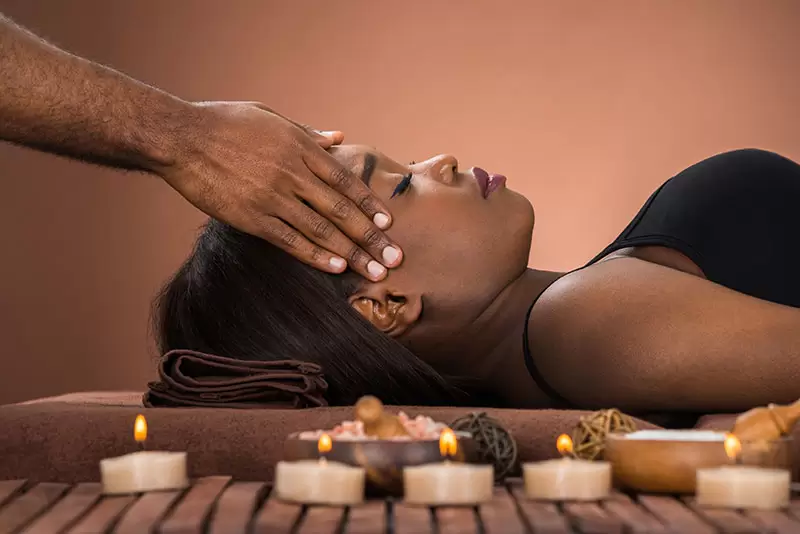
How does aromatherapy enhance a massage experience?
Aromatherapy massage incorporates essential oils to enhance relaxation and healing. The scents can affect mood, reduce stress, and improve overall well-being. Each oil is chosen for its therapeutic properties, such as lavender for relaxation or eucalyptus for energy, adding a sensory dimension to the massage.
These may be either inhaled into the lungs or absorbed via the skin, where they have tremendous health benefits. Some of the aromatherapy massage benefits are pain relief, sleeping improvement, reduction of anxiety and depression, and immunity booster. The therapist may personalize the types of oils depending on needs, thus providing an individualistic therapeutic experience to the client that improves emotional and physical health.
What are the benefits of reflexology?
Reflexology focuses on pressure points in the feet, hands, and ears that correspond to different body parts. It promotes relaxation, improves circulation, and can alleviate pain and tension. By stimulating these points, reflexology helps restore balance and supports the body’s natural healing processes.
It is based on the belief that specific points on the feet, hands, and ears correspond to various organs and systems in the body. Reflexology is also applied to lower anxiety and stress by improving the functions of the nerves and increasing the energy level within the human body. It is mostly applied together with other forms of treatments in dealing with problems such as migraines, digestive disorders, and hormonal imbalances.
How does shiatsu massage promote healing?
Shiatsu massage uses finger pressure, stretching, and joint manipulation to improve energy flow and promote healing. Originating from Japan, it focuses on specific points along the body’s meridians. This technique can reduce stress, alleviate muscle pain, and enhance the body’s natural ability to heal itself.
Shiatsu is one of the therapies aimed at re-establishing a person’s energy and equilibrium of a person. It rectifies not only physical but also emotional health. Shiatsu can correct conditions like anxiety, depression, arthritis, digestive problems, and others. The mechanism of this technique provides better circulation, flexibility, and immunization. The majority of people go through Shiatsu as a very deep relaxation, which refreshes them by rejuvenating themselves. This makes it a very popular holistic treatment.
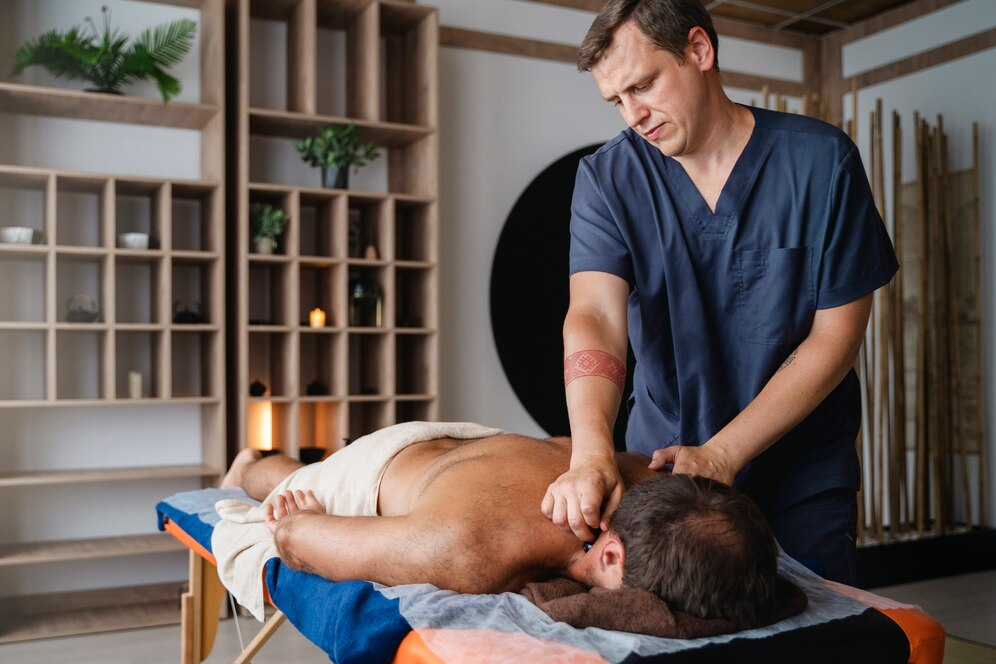
What should I expect during a Thai massage?
Thai massage involves stretching and deep pressure techniques to improve flexibility and circulation. Performed on a mat, it combines yoga-like stretches with rhythmic compressions. This massage helps release tension, increase energy flow, and improve overall well-being, leaving you feeling invigorated and balanced.
Unlike other traditional massages that take place on a table and involve oils and lotions, Thai massage is performed on a mat on the floor, where the client is fully clothed. The therapist uses hands, knees, legs, and feet to move you into a series of stretches. The technique facilitates flexibility and muscle relaxation but also aligns the skeletal structure of the body, enhancing posture and reducing back pain.
How can prenatal massage benefit expecting mothers?
Prenatal massage relieves discomfort during pregnancy by reducing muscle tension, improving circulation, and alleviating stress. It helps reduce swelling, improve sleep, and promote relaxation. Tailored to the needs of expecting mothers, it enhances physical and emotional well-being throughout pregnancy, providing comfort and support.
This type of massage can also help alleviate pain in the back, hips, and joints caused by increased weight and shifting posture. It can reduce anxiety, promote relaxation, improve mood, and support better sleeping patterns for expectant mothers. However, it is still very important to consult one’s healthcare providers and to ensure the massage is performed by therapists trained in prenatal care.
Conclusion
The world of massages in therapy is varied enough to cater to everyone’s needs pertaining to calming down nerves, relieving pain after a busy day from work, boosting sporting performance, among many other desires.” Different kinds of messages can help one identify what works best for him/her according to his/her preference or unique needs.” The good idea here would be to consult with qualified experts in the massaging field who would know the right cure for improving general health status.
References
Massage therapy
Massage is a very ancient form of alternative medicine that has lots of health benefits.
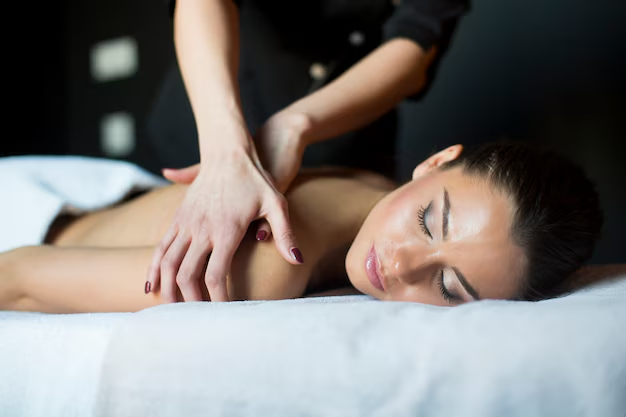
Did you ever think about how a massage could increase your physical fitness? While you may view them as indulgent or stress-relieving after a long day, massages are not just for rest. They also can help with getting into better shape. Powerful methods of using massage therapy for overall health and wellness will be discussed in this article. So what does this mean for our bodies if we incorporate regular massages into our workout routine?
What are the health benefits of massage therapy?
Massage therapy offers numerous health benefits, including reduced muscle tension, improved circulation, and enhanced flexibility. It also promotes relaxation, reduces stress, and can alleviate symptoms of anxiety and depression.
These help in ensuring a healthy body and mind, thus rendering massage therapy essential to wellness. Massage therapy works on the principle of stimulating blood flow and releasing endorphins in the body to enable it to recover from physical and emotional stress.
It improves the quality of sleep, strengthens immune functions, and accelerates injury recovery. Massage also has cumulative effects if regular sessions are taken; hence, it gives added immediate and long-term benefits for the health outcome of clients.
How does massage therapy relieve stress?
Massage therapy relieves stress by reducing cortisol levels and promoting the release of serotonin and dopamine. These changes improve mood and relaxation.
Massage sessions use physical touching, which tends to comfort and help in stress reduction, thus improving one’s well-being and acting as a guard against a negative state of mind.
It acts as a catalyst to a person’s natural response to relaxation through soft pressure and soothing strokes of massage, stimulating the parasympathetic nervous system.
This will help lower heart rate and blood pressure, making a person calm. Massage sessions hence leave people less anxious, with clearer minds; thus, this becomes beneficial in stress reduction.
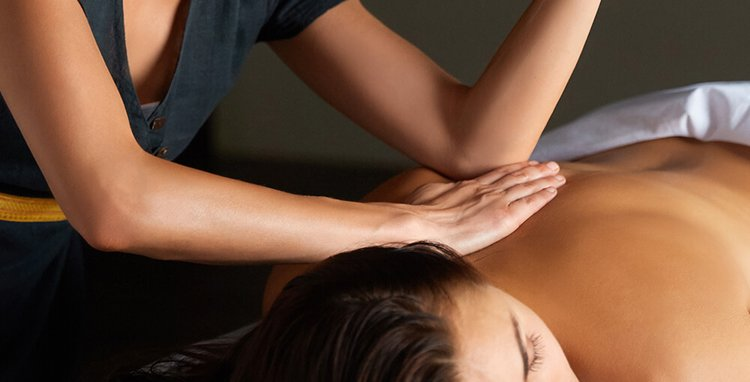
Can massage therapy improve sleep quality?
Massage therapy can improve sleep quality by relaxing muscles, reducing stress, and enhancing melatonin production. It promotes a calm mind and body, leading to deeper and more restful sleep.
Regular massage therapy helps regulate sleeping patterns and improves the quality of sleep for effective rest. Massage relaxes muscle tension and calms anxiety, priming the body for a deeper, more rejuvenating sleep. Through massage, elevated levels of serotonin may stimulate melatonin, which aids in the sleep-wake cycle. Regular sessions enhance the continuity of sleep and foster sleep efficiency.
How does massage therapy enhance athletic performance?
Massage therapy enhances athletic performance by improving flexibility, reducing muscle soreness, and promoting faster recovery. It increases circulation, delivering nutrients to muscles and removing waste products.
These benefits help athletes maintain peak conditions, prevent injuries, and optimize physical performance during training and competitions. Regular massage sessions will help maintain the elasticity of the muscles and mobility at joints, something very essential in creating top performance.
Such a decline in muscle stiffness and soreness can provide a better environment for efficient training sessions. Athletes who include massage therapy as a part of their regimen generally have an increased range of motion and reduced chances of overuse injuries.
What role does massage therapy play in pain management?
Massage therapy plays a significant role in pain management by reducing muscle tension, improving circulation, and releasing endorphins.
This reduces discomfort through focused pressure and manipulation, thereby improving mobility and enhancing quality of life, as in conditions like arthritis and fibromyalgia. Massage therapy interrupts the pain signal and provokes the release of natural pain-relieving chemicals, like endorphins, within the body.
It alleviates discomfort on a physical and emotional level, and hence is holistic in nature. Massage has been shown to provide a sense of well-being, which improves function and reduces reliance upon pain medications in the client.
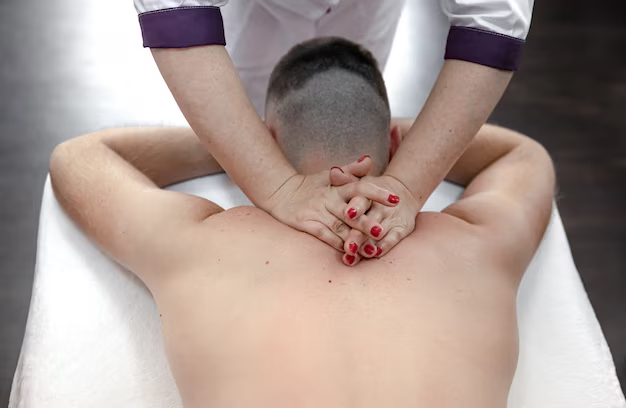
Is massage therapy effective for mental health?
Massage therapy is effective for mental health by reducing anxiety, stress, and depression symptoms. It increases serotonin and dopamine levels, enhancing mood and relaxation.
The relaxing atmosphere and physical touch will communicate emotional support and thus help improve mental health and emotional well-being in general. Many massage clients report that they are emotionally more stable and better balanced after a massage.
Massage therapeutic effects complement traditional mental health treatments through providing non-invasive means to help psychological well-being. Massage therapy will enhance outcomes about mental health treatment and improve quality of life by generating a sense of connection, care, and well-being.
How often should you get a massage for optimal benefits?
For optimal benefits, getting a massage once a week or every two weeks is recommended. This frequency allows for sustained relief of muscle tension, stress reduction, and improved circulation. Regular sessions help maintain physical and mental well-being, supporting long-term health and quality of life.
The frequency of massage appointments that would be most desirable for each person must be calculated upon a person’s needs, lifestyle, and health goals. For those people suffering from chronic pain or undergoing continuous stress, it may be necessary to come more often.
For others, once a month may suffice. If one is to truly experience the cumulative benefits of massage therapy, it should be supported by good habits, for only through consistent application can one enjoy overall wellness and help ward off future health problems.
In Conclusion
Overall, massage therapy should be seen as more than a luxury but an essential tool for physical fitness. This happens through increasing muscle rebuilding rates, improving flexibility, enhancing athletic abilities, alleviating stress levels, regulating immune system responses, and facilitating pain control; besides promoting better sleep patterns. Therefore, if you are yet to make massages part of your workout routine begin now because they will not only make you feel good but also assist peak performances.
Massage therapy
Massage is a very ancient form of alternative medicine that has lots of health benefits.
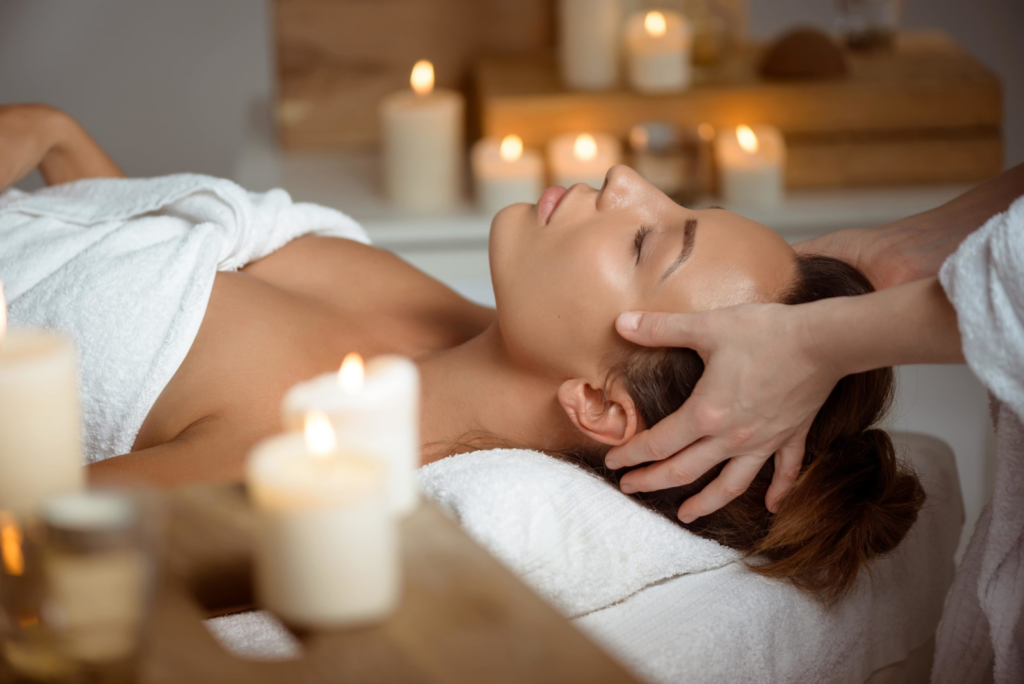
Massage is a well-known alternative medicine that has been in practice for thousands of years. While most people associate massage with relaxation and pampering, this profession goes much beyond just luxury.
What Is The Role of a Massage Therapist?
A massage therapist uses hands-on techniques to manipulate muscles and soft tissues, promoting relaxation, reducing pain, enhancing circulation, and supporting overall well-being.
In essence, the work of a massage therapist involves manipulating the soft tissues of the body to facilitate stress reduction, alleviate pain, and enhance general well-being.
A professional masseuse will often undertake a comprehensive assessment before starting any massage session. Such steps involve asking notes on the client’s medical history, setting goals for the client’s massage session, observing patient’s posture, movement and developing an individualized treatment plan
Different kinds of massages are performed by various therapists.
What Are The Different Types of Massage Therapy?
Different types of massage therapy include Swedish, deep tissue, sports, trigger point, hot stone, prenatal, aromatherapy, reflexology, Thai, and Shiatsu massage.
Swedish Massage is a gentle, full-body massage that uses long strokes, kneading, and circular movements to achieve relaxation and increase circulation. Deep Tissue Massage targets the deeper layers of muscle and connective tissues in order to release chronic muscle tension.
Sports Massage aims to prevent and treat injuries, improve flexibility and enhance athletic performance among athletes.
In Trigger Point Therapy pressure is applied on particular areas of muscles with an aim of releasing tension and reducing pain. Myofascial Release is manipulating fascia (connective tissue) in order to promote mobility and decrease pain.
Hot Stone Massage helps muscles relax while circulation improves. The therapist must be skilled in these techniques for maximum benefit for clients.
How To Create a Safe Environment?
Massage therapists can create a safe environment by maintaining a clean, comfortable space, ensuring client confidentiality, communicating clearly, respecting boundaries, and obtaining informed consent before each session.

It is important that therapists take responsibility for their client’s safety while ensuring comfort. A clean work area means sanitizing massage tables, linens, equipment, etc.
Proper procedures will help respect client privacy while providing comfort. Avoiding harm through proper knowledge of appropriate levels of pressure or technique.
What Is The Importance Of Patient Education?
The importance of patient education lies in explaining massage benefits and risks, advising on posture and body mechanics, recommending stretches, and suggesting lifestyle changes to reduce pain and tension.
Massage therapists are essential in educating clients about their bodies and fostering health in the long run. This is normally done by Illustrating the benefits and potential dangers related to different massage techniques.
They instruct clients on the right postures and body mechanics. They recommend stretches or exercises that can accompany massage therapy. They also suggest lifestyle changes that might help ease pain or tension.
What Are Physical Health Benefits Of Massage Therapy?
Physical health benefits of massage therapy include reduced muscle tension, improved circulation, pain relief, enhanced flexibility, quicker injury recovery, lowered blood pressure, and boosted immune function.
There are several physical advantages associated with massage therapy, including relief from chronic pain like lower back, neck, and head pain among others.
Soft tissue manipulation improves blood flow, thereby enhancing oxygenation and nutrient delivery to cells. Regular massages enable one’s muscles to relax, thus improving joint mobility.
Inflammations can go down through massage, facilitating quick healing of damaged tissues. A few scientific studies have proposed that it may enhance the activity of natural killer cells, hence boosting immunity against diseases.
What Are The Mental Emotional Benefits Of Massage Therapy?
Massage therapy offers mental and emotional benefits, including reduced stress, anxiety, and depression, improved mood, enhanced relaxation, better sleep, and increased overall well-being.
The work of a masseur also involves promoting emotional well-being.
It has been proven scientifically that through massage therapy, cortisol decreases while “feel good” hormones like dopamine increase. Many people experience better quality sleep if they get regular massages.
For someone dealing with depression or anxiety, sometimes adding more pressure helps relax the person. Regular massage therapy helps clients understand and appreciate their bodies much more.
What Are The Specializations In Massage Therapy?

Specializations in massage therapy include sports massage, prenatal massage, deep tissue, oncology massage, reflexology, myofascial release, aromatherapy, craniosacral therapy, and orthopedic massage.
Massage therapists who focus on prenatal and postnatal care work with pregnant women and new mothers to relieve discomfort associated with pregnancy and promote recovery after childbirth.
Oncology massage practitioners help cancer patients manage symptoms such as pain, fatigue, and side effects of treatment. Specialization in this area requires deep knowledge of cancerous conditions and its treatments.
Geriatric massage deals with elderly people experiencing issues like arthritis, reduced movement due to age, or other circulatory problems. These therapists need to be conversant with the effects of aging on physiology in order to adjust their therapy.
Some massage therapists exclusively handle professional players while others deal majorly with amateur athletes. Apart from treating sport injuries, it encompasses helping sportsmen avoid injuries and maximize performance by applying tailored massages.
How often should you get massages?
Massage frequency depends on individual needs, but generally, once a month is recommended for maintenance, while weekly sessions may benefit those with chronic issues.
The frequency of massages is tailored to the needs and objectives of each patient. Most people find that having one massage every month does the trick for them when they are doing it for general wellness and stress relief.
Some may need weekly or biweekly treatments, especially if they have chronic pain, muscular tension, or other specific health conditions. On the other hand, athletes and generally active individuals may require more frequent massages to assist in their recovery process.
In order to find the most appropriate routine based on personal well-being and lifestyle, an individual should consult a masseuse.
What happens during a full-body massage?
During a full-body massage, a therapist applies techniques to muscles, joints, and soft tissues across the entire body, promoting relaxation, circulation, and overall wellness.
Various techniques are employed by therapists during a full body massage to relax muscles, enhance blood flow as well as relieve muscle tension across the body.
Typically it begins with the back, shoulders and neck while the client is lying face down on the bed then moving onto legs and feet before asking him/her to turn over so that front can be massaged including arms, legs or sometimes belly.
Conclusion
Massage Therapy provides relaxation , facilitates healing of injuries and addresses chronic conditions. Massage therapists have a multifaceted role which involves physical abilities, scientific knowledge and deep understanding about human anatomy & physiology.
The contribution of massage therapy to healthy living cannot be understated since they play key roles in this area like injury recuperation right. Undoubtedly these professionals will continue playing significant parts in the healthcare landscape.
References
Massage therapy
Massage is a very ancient form of alternative medicine that has lots of health benefits.
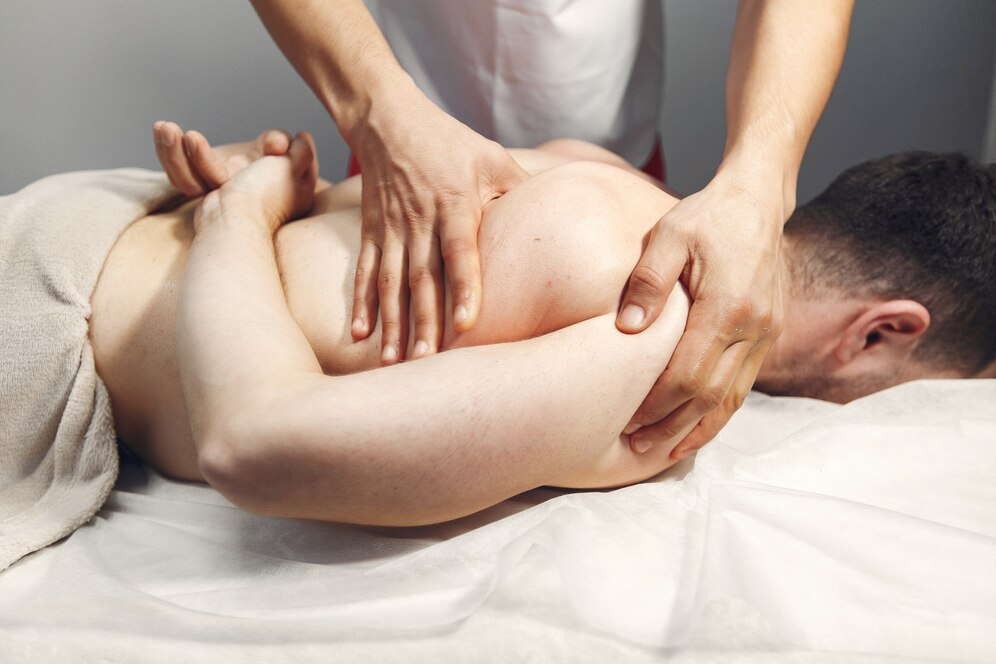
Through its ability to profoundly affect not only physical wellness but also mental wellbeing, massage therapy has captured dramatic attention. This ancient healing is wedded with modern therapeutic practice, making massage a holistically healthy form of therapy. Massage serves to reduce tension and decrease pain in relation to relaxation both for the body and mind. Effects of massage therapy all the way from relieving muscle tension to improving circulation stand beyond mere relaxation; thus, it is an extensively powerful tool for improvement in health and quality of life in general.
Understanding Massage Therapy
Definition and Types of Massage Therapy
Massage therapy involves manipulating muscles, skin, and tendons using pressure from various sources. Apart from being an old healing method, this scientific approach is supported by scientific research to help people stay healthy. Some massage varieties include:
- Swedish Massage: With its soft strokes and rubbing movements, Swedish massage reduces anxiety, improves nutrient circulation in the body, and releases muscle tension.
- Deep Tissue Massage: This method uses slower but more forceful strokes to get into deeper muscle layers and connective tissue. This is mostly done in order to treat muscle injury arising from sports-related activities.
- Sports Massage: A combination of techniques are employed in sports massage that not only prevents injuries but also treats them whenever they occur while at the same time enhancing athletic performance and reducing recovery period.
- Reflexology: Working with pressure points located at the hands, feet or ears helps reflexology restore energy balance throughout the entire body system hence mostly used for relaxation purposes to alleviate stress.
- Other Forms: There are many others such as aromatherapy which entails the use of essential oils during massages or shiatsu which is a Japanese technique involving rubbing fingers on certain parts to open energy channels.
The Historical Background of Massage Therapy
Massage therapy has an ancient origin. The history of massage therapy began more than 5,000 years ago with its early practice by the Egyptians, the Chinese, and others in India. In China, it is referred to as Traditional Chinese Medicine while in India, it was part of the science of Ayurveda.
The Greeks and Romans later adopted massage therapy for relaxation and healing purposes; they applied it for enhancement of physical performance and recovery. It developed and formed into a precise treatment modality utilizing various techniques as a modern massage therapy brings ancient understanding to integrate it with modern application while giving a holistic and well-rounded treatment of many health conditions.

Basic Principles and Techniques of Massage Therapy
Massage therapy is the art of soft tissue manipulation to attain relaxation, pain relief, and an improvement in physical well-being. Some major techniques employed include effleurage or long strokes, petrissage or kneading, and friction or deep circular motions. Such methods are employed in order to enhance circulation, as well as the relief of muscle tension, and stimulate healing.
More popular kinds of massage are Swedish massage, deep tissue, and sports massage. Some foundational concepts are seen in the idea of the body-mind connection, where massage helps to relieve both physical unease and stress. Pressure on specific areas to release tension, increase flexibility, and promote overall recovery are some applications of a massage by a therapist.
Healing Benefits of Massage Therapy
Physical Health Benefits
Certainly, massage therapy has been confirmed over time not only for its calming effect but also for numerous health benefits:
- Muscular Pain and Stiffness Reduction: Consistent massages can ease muscle tension or pain, especially if you have long-term conditions such as chronic lower back pain or arthritis.
- Enhanced Mobility and Flexibility: Muscle, connective tissue, tendon and ligament work done by massage can increase your range of motion making you more flexible hence facilitating better general mobility.
- Improved Recovery from Physical Injuries: It is common to include a massage in injury rehabilitation plans. This will help with blood circulation as well as lymph flow, thus accelerating healing while minimizing the recovery period.
Mental Health Advantages
The significance of the psychological benefits of massage is alike:
- Reduced Stress and Anxiety Levels: In fact, this technique can lead to lower levels of cortisol while dopamine and serotonin levels are increased, thus relieving stress and anxiety.
- Improved Sleeping Patterns: The calming effects of massages on sleep are acknowledged to result from its impact on delta waves in the brain which assist deep sleep.
- Depression Implications: Persons undergoing depression can benefit from frequent massaging sessions since their mood will be boosted as well as their anxiety levels reduced.
Long-term Health Prospects
Massage therapy guarantees long-term health results:
- Strengthened Immune System: Massage therapy helps enhance your immune system by stimulating lymph flow that defends against disease-causing organisms hence minimizing your chances of illnesses.
- Better General Circulation: Better circulation means the improved supply of blood across all body organs, translating to more oxygen and nutrients going into cells.
- Preventive Medicine Role: Regular massage sessions may help a great deal in overall maintaining good health since they can catch such changes that can be felt.
Step-by-Step Guide: What Does a Massage Therapy Session Entail?
A usual session will be a consultation by the therapist in determining the health needs and what you want. You will be asked to lie on a massage table that is very often covered with a sheet for comfort and modesty. Techniques can be effleurage or deep tissue work with oils or lotions applied on tense and painful areas.
Pressure levels may vary from one massage provider to you and your preferences although commonly in types of massages done. The session is closed with post-massage care recommendations, hydrating and stretches to keep the benefits for a longer time.

Scientific Insights: What Does Research Say About Massage Therapy?
Several studies have proven the wide-ranging benefits of massage therapy. It can be particularly appreciated for its stress reduction, pain management properties, and improving the function of circulation. Studies also show that massage has the ability to decrease cortisol levels, because frequent massages enhance mood and relaxation.
Again, more research proves that massage helps the patient deal with diseases like fibromyalgia, arthritis, and recovery after muscle injury. Also, during a session, the release of endorphins gives a natural pain relief mechanism. Even if some claims call for further studies to be confirmed, the bulk of scientific evidence is proving massage therapy to be an excellent complement in both physical and mental health treatments.
Debunking Common Myths and Misunderstandings about Massage Therapy
There is that common myth around the understanding that massage therapy is only set forth for relaxation. While it is most definitely relaxing, massage therapy also has health-related benefits, including the management of pain and flexibility. Another belief is that deep tissue masses must hurt; conversely, an experienced therapist is able to apply pressure without causing discomfort.
Many still believe that massage is inappropriate or potentially unsafe if used for specific conditions, but most people can benefit from massage if a qualified therapist is used. To put it in a nutshell, many people misconceptualized that massages only benefit the body, but it also holds crucial effects in lessening one’s stress and anxiety.
Selecting the Right Practitioner: How to Find a Qualified Massage Therapist
Finding a qualified massage therapist entails several things. For starters, a good practitioner should have formal training from a recognized institution and be licensed to practice in your area. Find therapists specializing in the massage type you would like to receive: Swedish, deep tissue, or sports massage, for example.
Reviewing comments and asking around for personal recommendations can also help. The good therapist will make sure he understands what specifically concerns or afflicts you so that he can customize the session in the best manner to provide safety and effectiveness while in treatment.
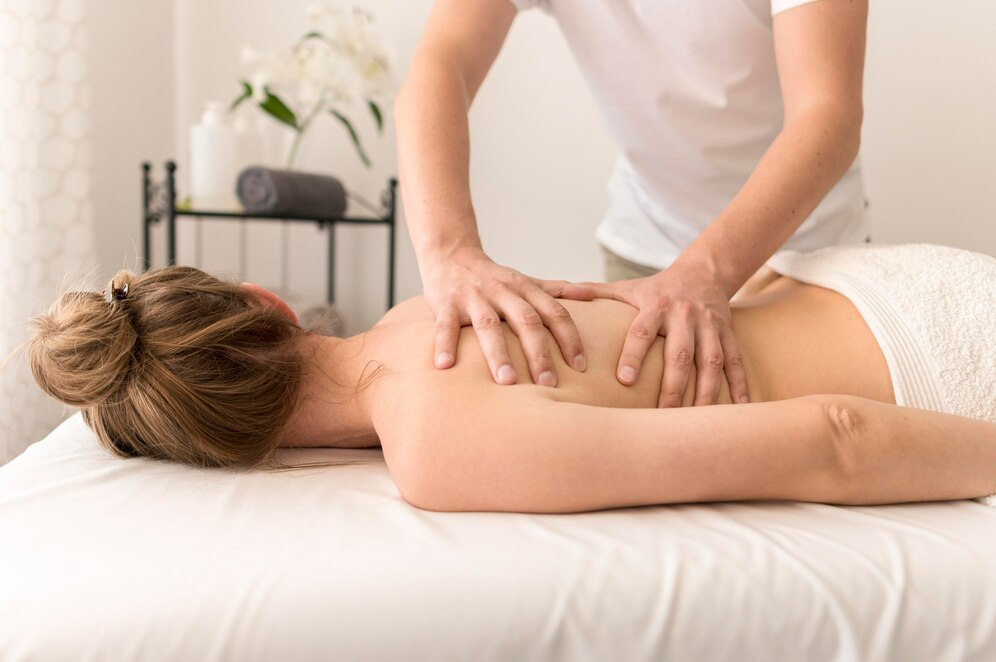
Massage Therapy in Combination with Conventional and Complementary Therapies
Massage can be added to the standard medical treatments. It goes very well when applied with physical therapy, chiropractic treatment, and acupuncture to reduce the discomfort and promote recovery from pain. For instance, patients who undergo rehabilitation after surgery or who have chronic diseases such as arthritis may really benefit from massage therapy to facilitate ease and comfort of movements.
It also works compatible with other mental therapy treatment, like psychotherapy, by reducing levels of tension and stress among the patient. The inclusion of massage therapy in a multi-model treatment scheme will add value towards global wellness and provide a basis for full recovery. Therefore, massage will be endorsed both as a traditional and alternative therapy.
Conclusion
The benefits gained from taking a massage go way beyond rejuvenation only since it affects physically healthy bodies, mental alertness, emotional stability, even interpersonal relations as well. This versatile approach to health that works whether independently or along other methods of treatment hence making it accessible to all people.
